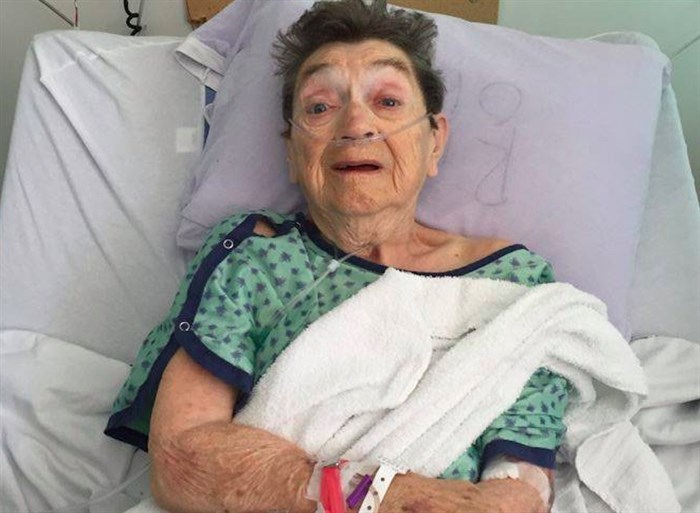
Kamloops senior Emily Houston was assaulted by a fellow care home resident in July 2015 and died 10 days later.
Image Credit: contributed
June 29, 2016 - 2:30 PM
OKANAGAN - More than 400 seniors were harmed by fellow patients in care homes last year, according to an investigation by B.C.’s seniors advocate.
The report by advocate Isobel Mackenzie looks at the emerging pattern of resident aggression in B.C. care facilities and comes after several high profile fatalities. John Furman, 95, was accused of murdering his roommate, 85-year-old William May, in the summer of 2013 (the charges were eventually dropped due to Furman’s mental condition.) In Kamloops, care home resident Jack Shippobotham died after getting attacked by a fellow patient. And in July 2015, Emily Houston died after getting pushed by another resident at a care facility in Kamloops.
According to the report, there were nine deaths related to resident aggression in residential care facilities reported by the B.C. Coroners Service since 2012.
At any given time, there are more than 27,000 people living in B.C.’s care facilities. Mackenzie’s investigation was launched to find out when and where violence is occurring, and how often it is happening — but in a news conference today, June 29, she said there was, unfortunately, no ‘aha moment.’
While the report identified 422 incidents between April 1, 2014, and March 31, 2015, where resident aggression resulted in a patient being harmed, Mackenzie says the data used is imperfect. She pointed to a lack of standardized reporting by care facilities as a major limitation in tracking and understanding resident aggression.
“I hope this report and the awareness it brings will catalyze better reporting,” she said.
Her report also suggests there is concern about incidents being under-reported.
While imperfect, the data does provide some initial take home messages.
A main one is that facilities with the most aggression incidents tend to be those with patients experiencing complex care needs and behavioural issues. Despite those complex care needs, Mackenzie’s report found these facilities do not have higher levels of funded direct care hours, and in fact have slightly fewer care hours compared to facilities with fewer incidents.
The report also found residents in high incident facilities have more behavioural problems and more psychiatric disorders. Roughly one-third of incidents occurred in residents’ bedrooms, and roughly 60 per cent in shared areas like the dining room, hallway and lounge.
The most prevalent type of aggressive behaviour was hitting with a hand or fist, (40 per cent of incidents) followed by grabbing (23 per cent), pushing and shoving (14 per cent) and hitting with an object (seven per cent.)
Mackenzie is recommending care facilities standardize reporting, review staffing levels, more staff training, and adopt strategies to mitigate aggressive behaviour, such as exploring the use of locking systems for private rooms to mitigate wandering behaviours.
You can read the full report here.
To contact a reporter for this story, email Charlotte Helston or call 250-309-5230 or email the editor. You can also submit photos, videos or news tips to the newsroom and be entered to win a monthly prize draw.
We welcome your comments and opinions on our stories but play nice. We won't censor or delete comments unless they contain off-topic statements or links, unnecessary vulgarity, false facts, spam or obviously fake profiles. If you have any concerns about what you see in comments, email the editor in the link above.
News from © iNFOnews, 2016